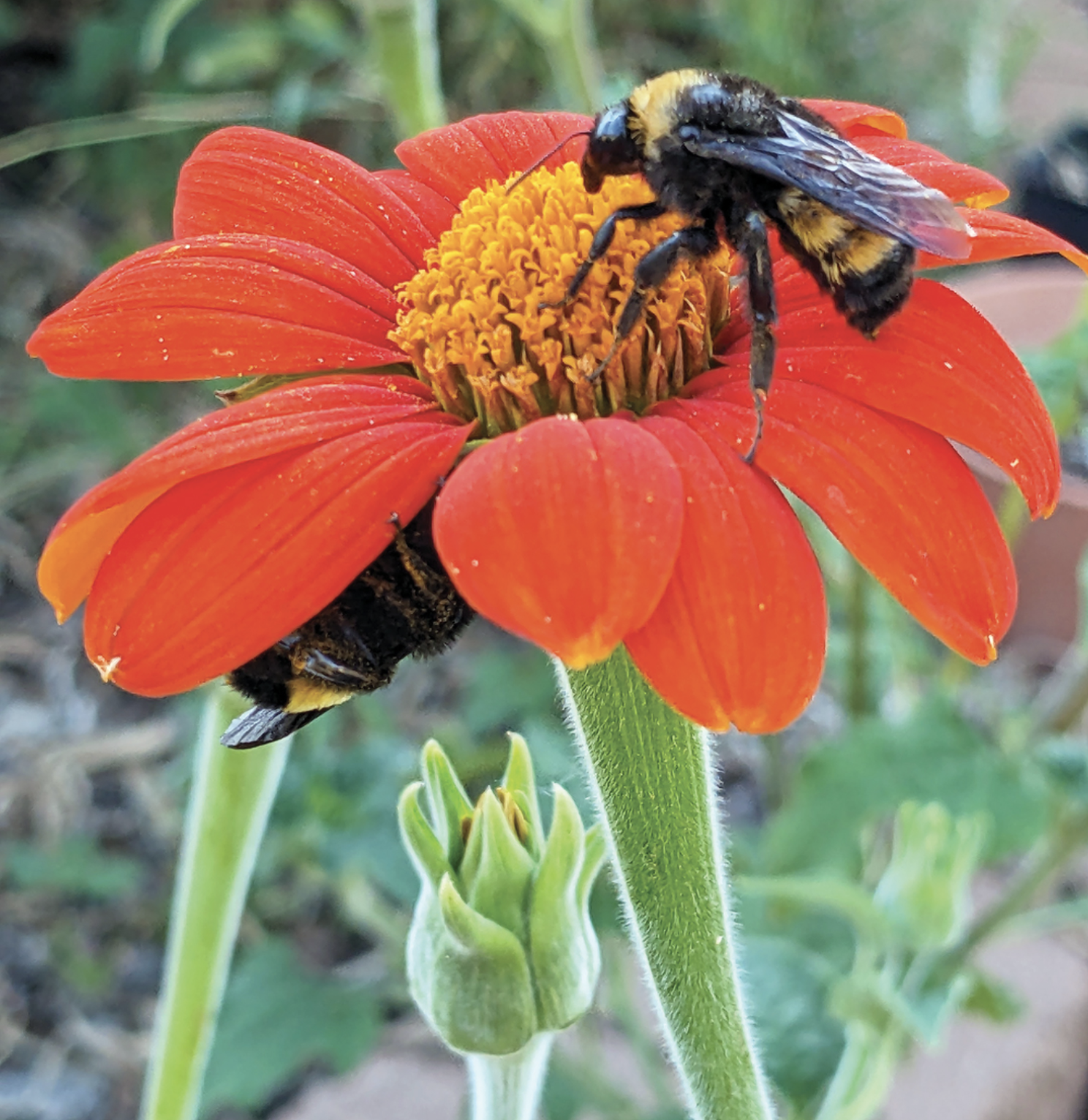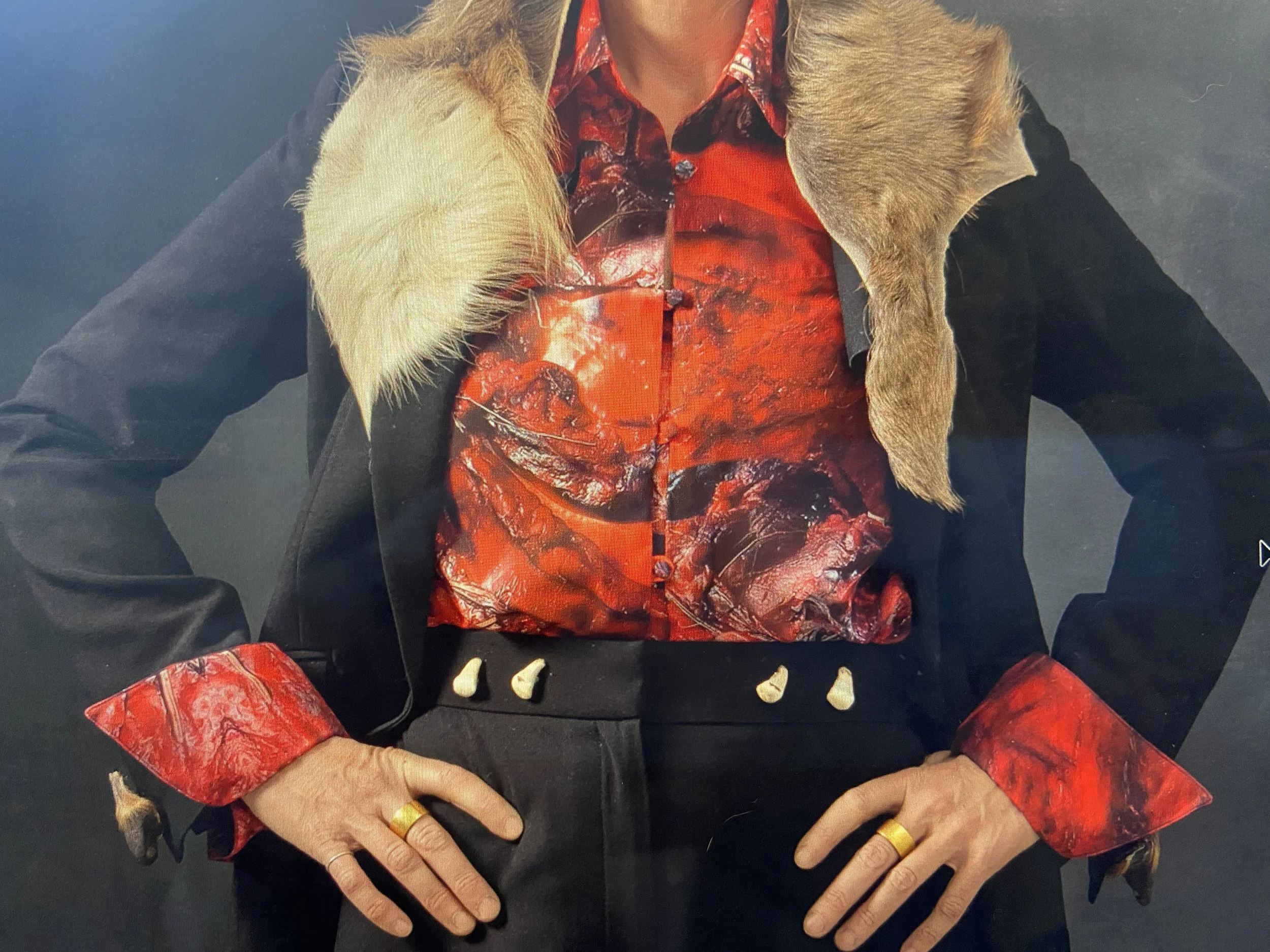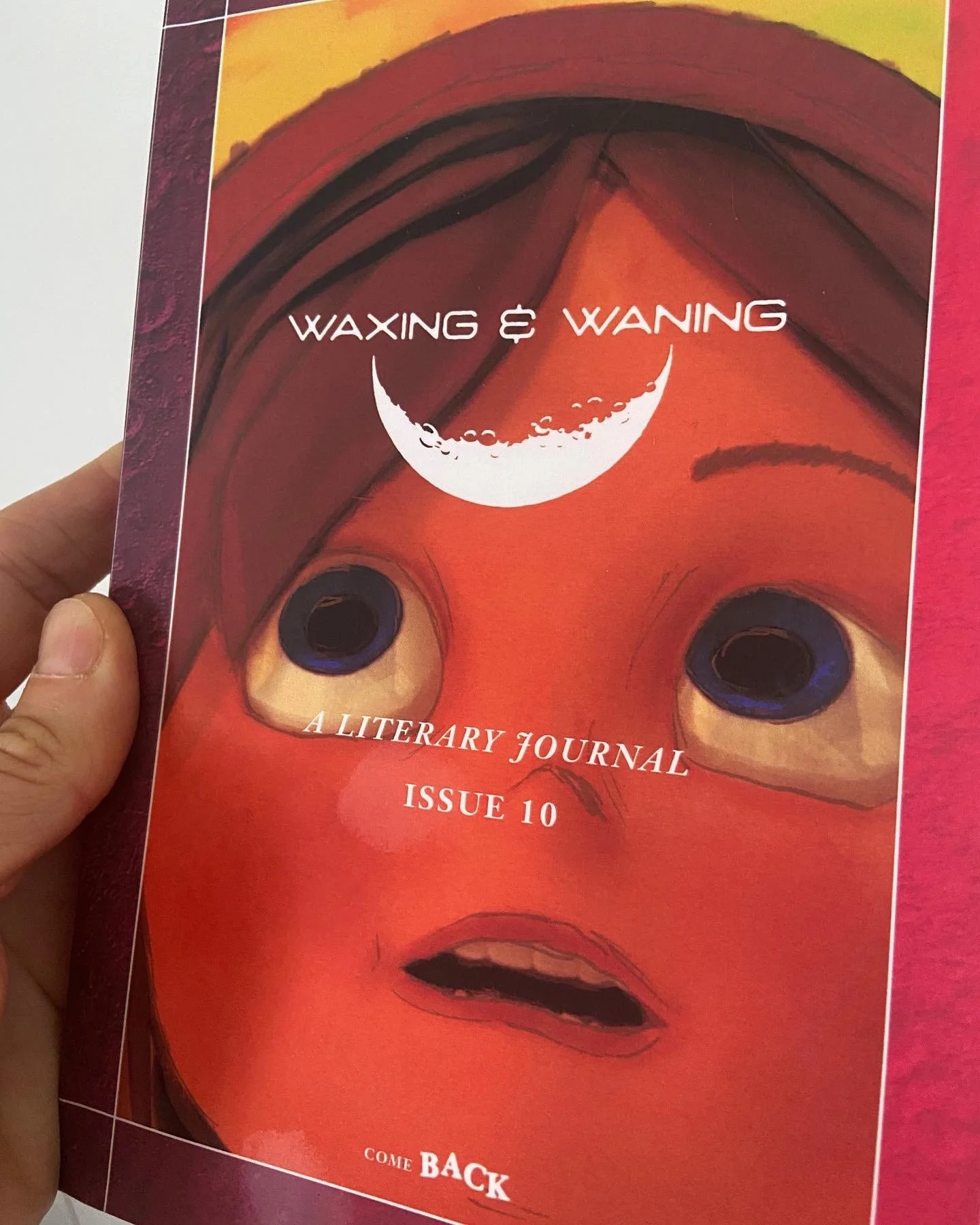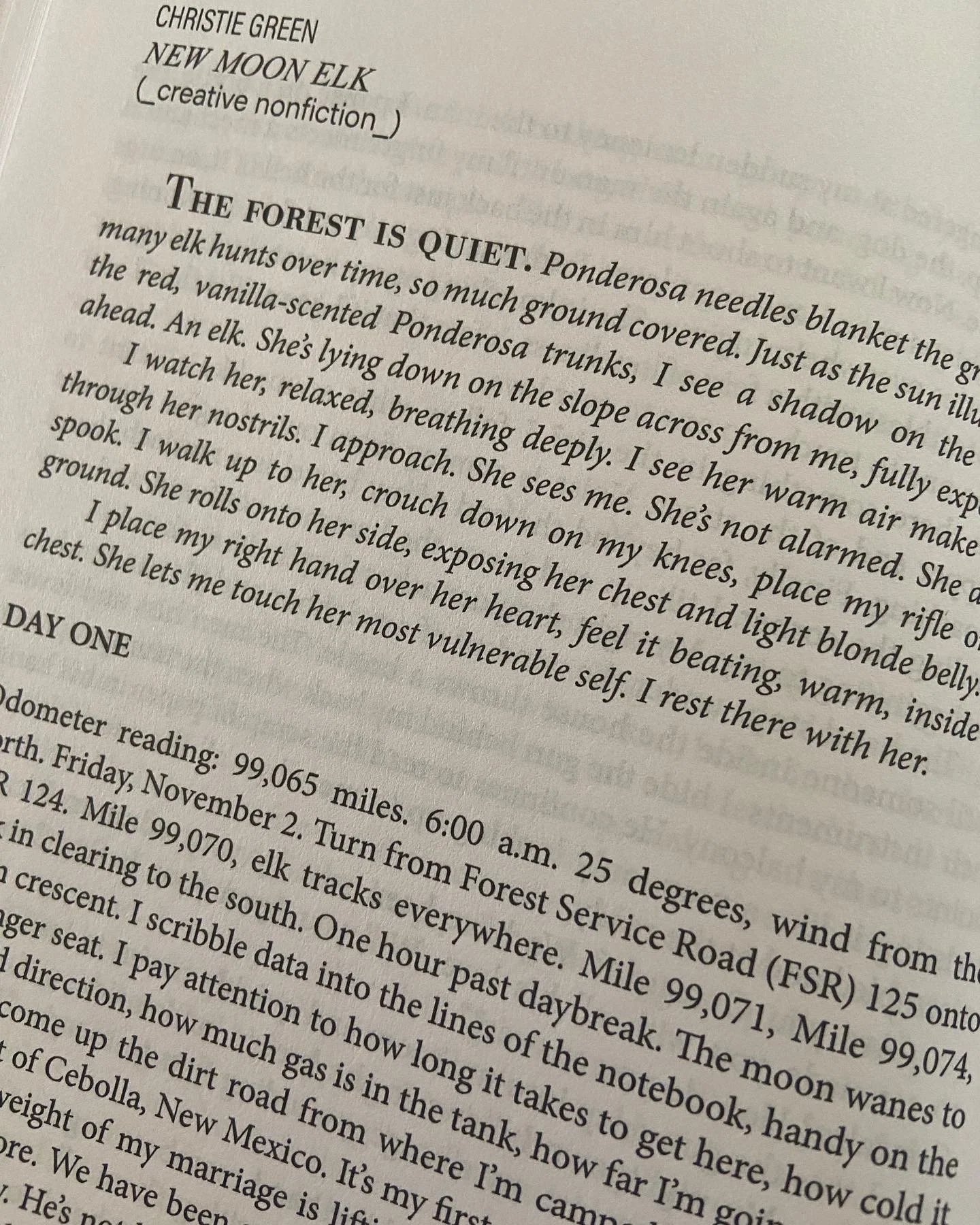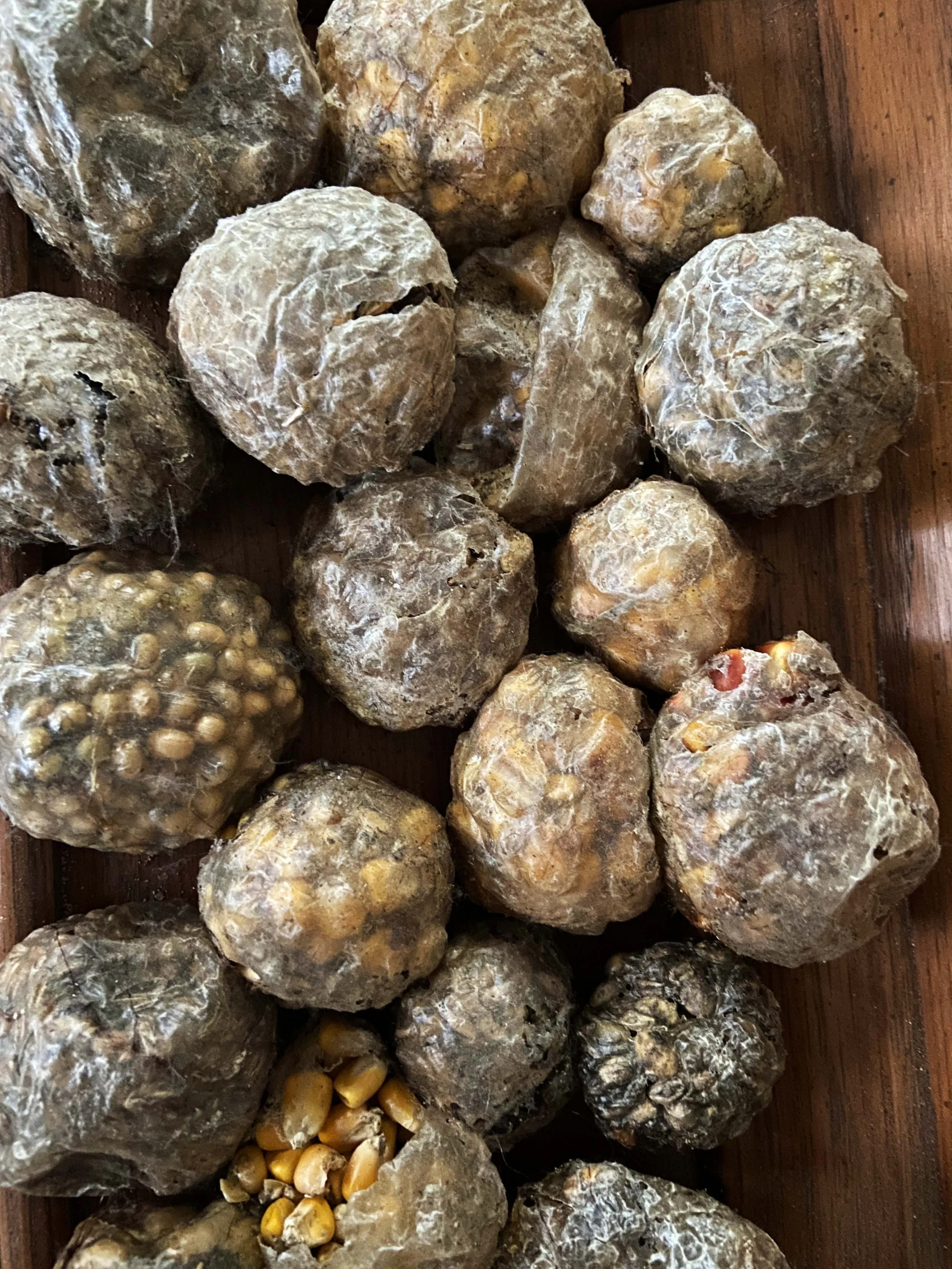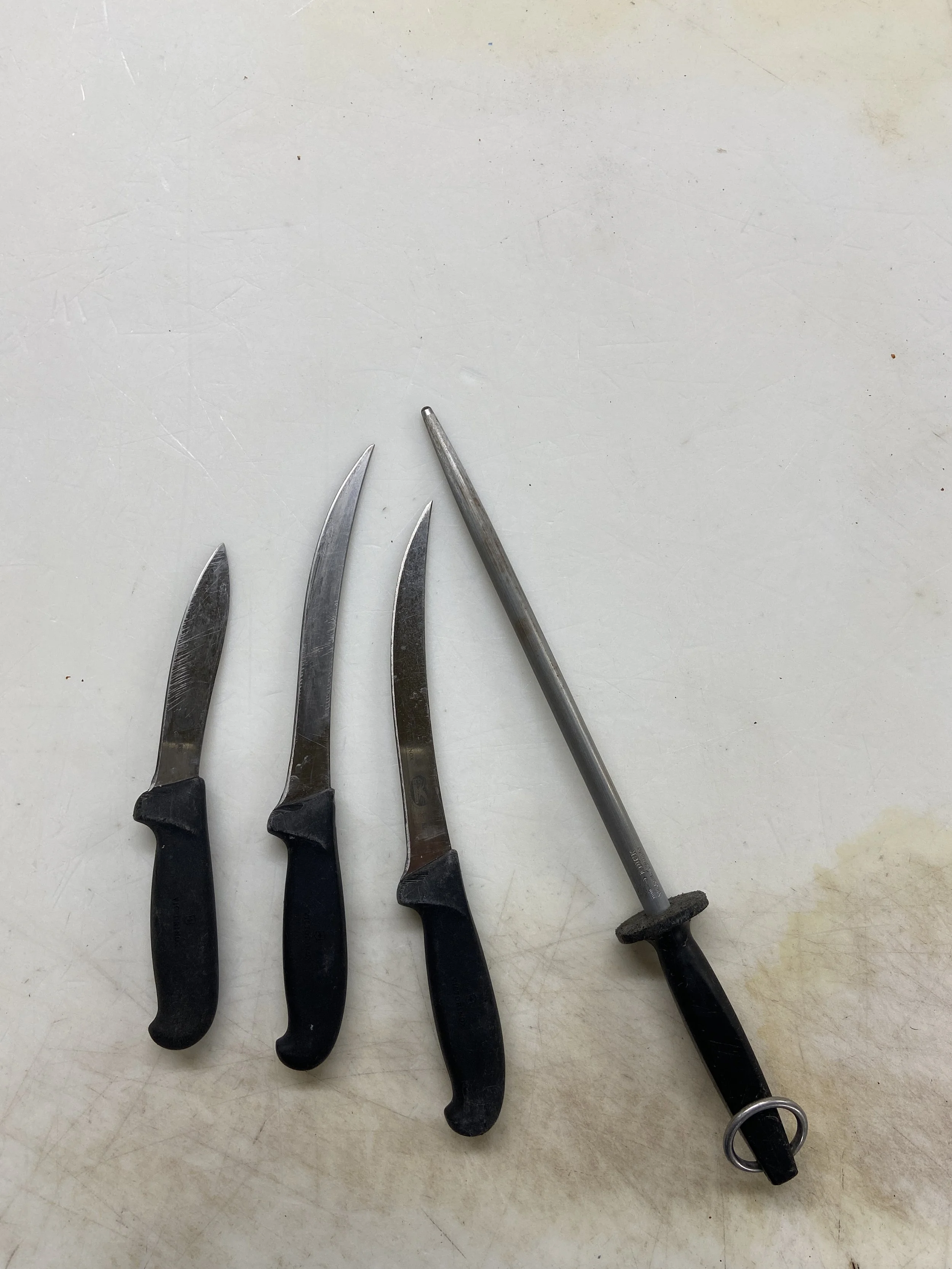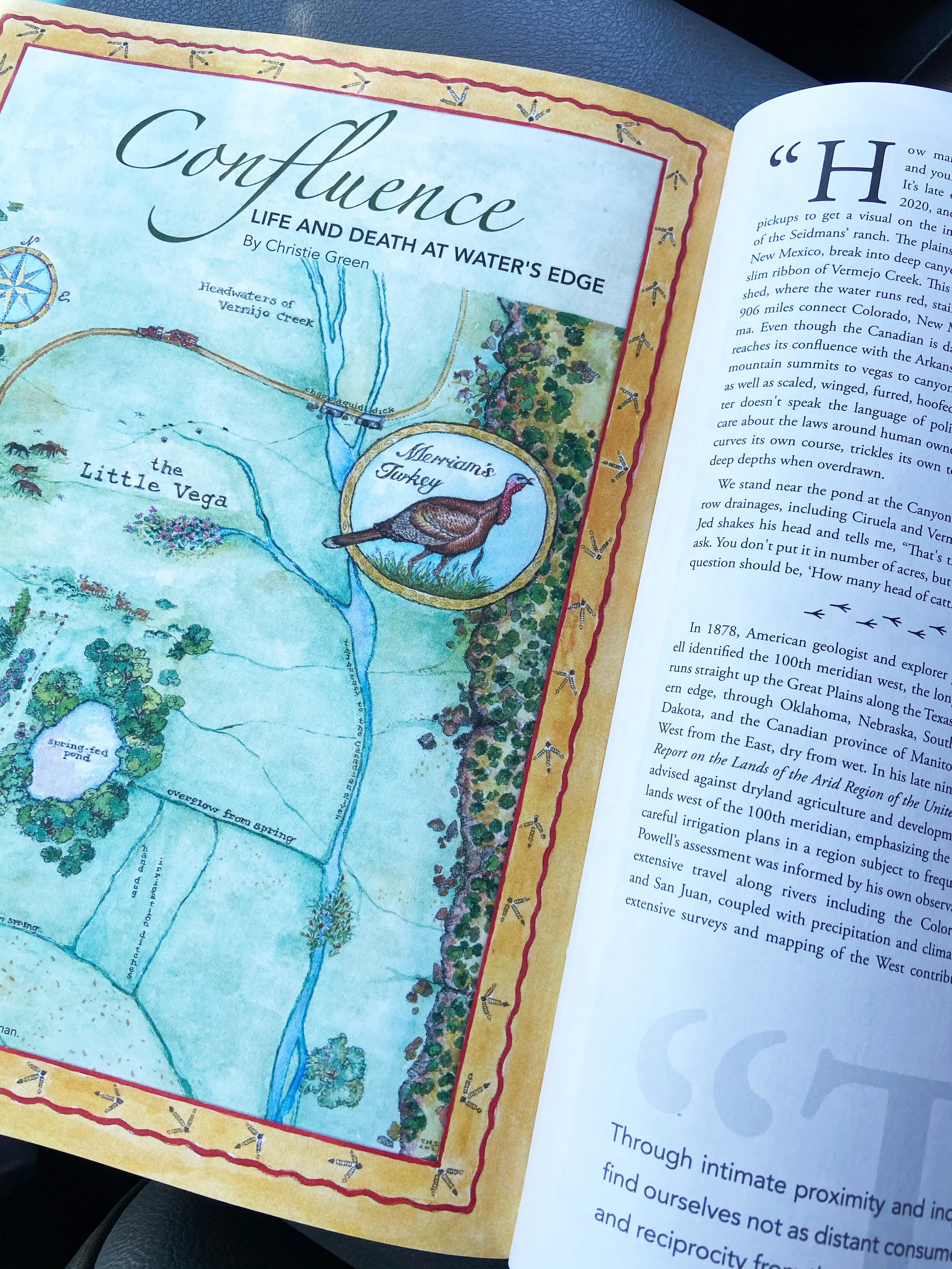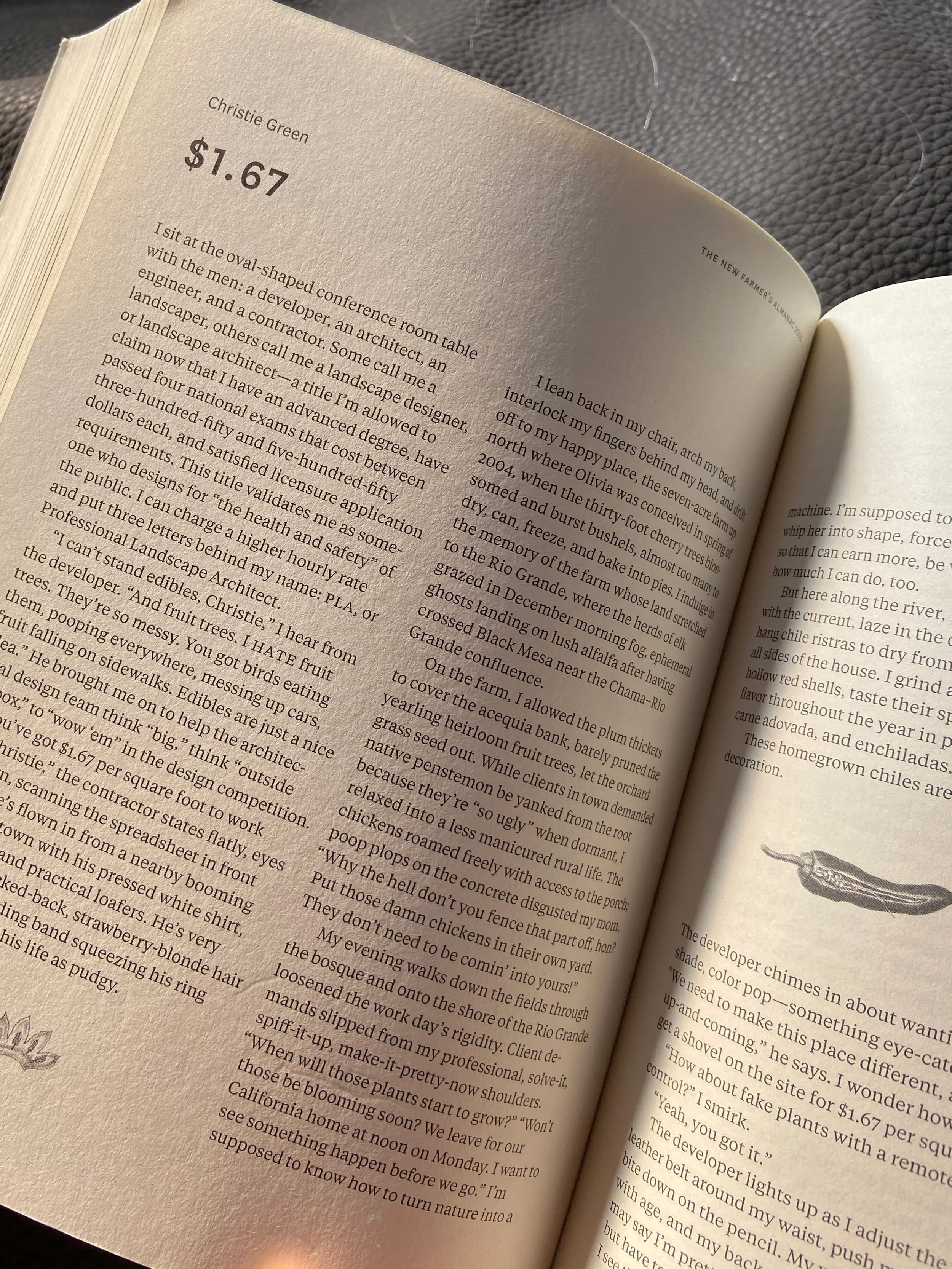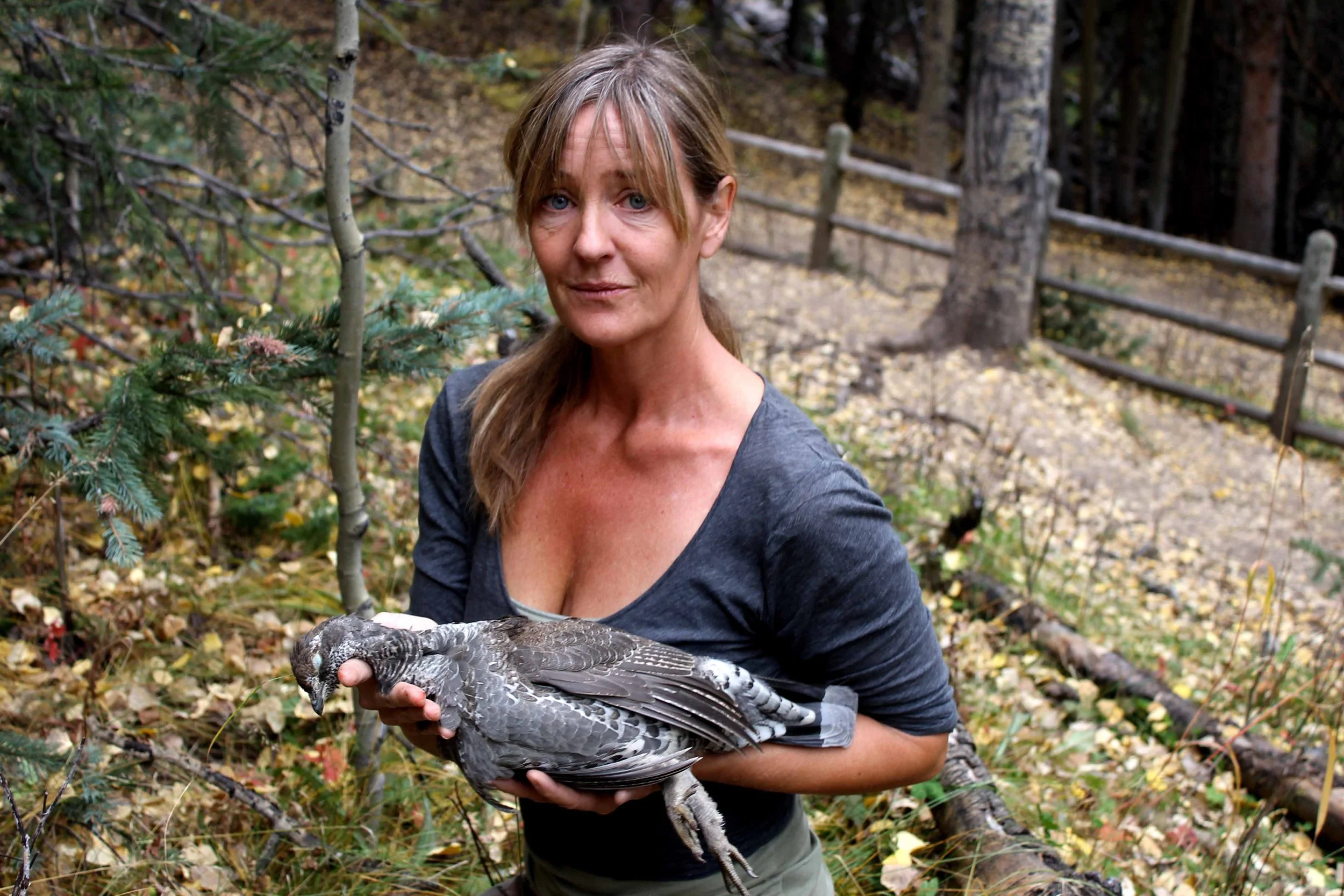COLOR: Standing Out or Blending In?
Color—hue, saturation, light—pleases, dazzles, and seduces. But even when manifesting as ornament or adornment, color is more than a skin-deep composition. It is a primary source and ingredient from which flows creativity, identity, nuance, and ambience. Personal wardrobe styles, interior decor, and countless forms of artistic expression course through visual art media, with color as currency. In the wild, color is both an innate and chosen tool by which animals identify themselves, their food sources, and one another. Beyond creative expression and outdoor aesthetic, color plays a critical role in plant and animal behavior. This might be most familiar as a bright red male tanager showing off to a pale yellow female or a hummingbird’s attraction to brightly colored penstemon, but as scientists are now learning, it also includes color adaptations in response to climate change.
edible Early Winter 2024
Mexican Sunflower. Photo by Erin Burtch
Christie Green hunting turkeys near Tres Piedras. Photo by Gabriella Marks
edible New Mexico, early summer 2023
Photo by Peter Ogilvie.
Heart Throb fabric design by Christie Green. Blouse, trouser elk ivories detail and jacket elk hide detail construction by Lorraine Gruys.
EMBODY: Food, Fashion and Landscape
Clothing, like food, is a powerful cultural artifact that expresses values, religion, ritual, celebration, and ceremony. While both what we wear and what we eat are practical and necessary elements of everyday life, they also demonstrate who we are, where we live and what we believe in.
***
In my hunting practice, I honor the animals through continued connection by making use of select parts of their bodies. Bone, hair and hoof - they are more than sustenance. Today, after two days of butchering, transforming a five-hundred-pound cow elk from hoofed body into future food, I feel her remaining weight as I heave her onto the countertop, a mass of matted tawny beige and blonde, long strands of deep umber and swaths of short, dense black.
Now, her hide is ready to be fleshed and tanned. I kept her folded into a thick bundle on a wooden stool at the side of my bed through the night. I wanted her to dream me from darkness into light, as if she could be my liminal steward as I was hers when I pulled the trigger at meadow’s edge. This morning, when I carry her heavy skin from bedroom to kitchen, I ask where she grazed, what shadows the moon revealed in the timbers. I ask what to do with her coat that sheltered her through the changing seasons of her life. Her bones, too, and curved collagen hooves now rest on the portal roof as offerings to raven, vulture, sparrows and thrashers, wriggling worms and shiny, shelled decomposer beetles. “What shall your body become?” I ask her.
NEW MOON ELK
They come to me as I drive, softening my view. They move in closer, unafraid. The food that was mine to take by trigger, to offer once I had returned home as a celebrated hunter, remains hoofed, finding night and day by scent and sound. I let them feed me now, fill my desire, render me new.
The moon exhales, empty, unapologetic. How long until snow falls again to obscure the outline of old imprints and reveal paths of fresh tracks? Where will the elk be tomorrow? Will they see the dimples from my hooves, smell my yellow stains?
How do I resuscitate the dream as it wanes upon waking, snatched away from my grasp when I open my eyes?
Waxing and Waning, Issue 10, fall 2022
SEED STORY: The Genius of Local
My boots cut tracks across those of coyote, deer, elk and cougar. A roadrunner skitters past, a redtail hawk lands on the powerline above. I roll a scaled quail crop between my forefinger and thumb, and let another one rest, light, in my palm. I feel the texture of miniature grains of grass, papery shrub seedheads, dried insects and shriveled pods of dried berries. During the walk, I slow to scratch a crop or two into the soil beneath the shelter of fallen pinon, one at the confluence of two arroyos and a few under the lips of a lichen-covered stone. I release the seed from its miniature spherical packaging, trusting the depth of intelligence at hand.
Crops from gallinaceous birds such as pheasant, grouse, partridge and quail.
edible New Mexico, fall 2022
Photo by Christie Green
A Passionate Process
Cutting Wild Game as Artful Connection
By the evening of my second day cutting, I’ve put fifteen hours into processing this elk. The freezer is stocked. I lift the body cavity and stripped quarters onto the portal roof for scavenging birds and the succession of decomposers that will break the body down further. I set the skull to boil and begin fleshing the hide to send to the tannery.
Both Waggoner and Gomez gasp when I tell them how long it takes me to process an elk by myself. Waggoner exclaims, “What?! I can do that in about an hour or two!” He invites me in to come watch and learn. “You come on in anytime. I’d be happy to show you and share.”
I consider the offer while reflecting on my solo time, elbow deep with the elk. I know now that these folks who process meat aren’t just anonymous factory robots but real people invested in bringing the meat to its most impeccable finished state. Their hands touch, cut, handle, and wrap with personal care, lifelong knowledge, and artisanal wisdom.
I look forward to my next elk hunt this November. If I’m fortunate enough to harvest an animal, perhaps I’ll gather around the butcher blocks of these two processors to share in the labor of harvest and love.
Knives and cutting board at Springer Processing, Springer, New Mexico. Alan Waggoner, Proprietor.
The Bite summer 2022
Photo by Christie Green
A Symphony of Species:
Beyond Human Regeneration
“To become earthlings, citizens of our planet, is to remember and reactivate a land-based connection that embodies reciprocity and respect. Rather than viewing water, soil, plants and animals and even air as resources to be extracted and used for our own sustenance and profit, what would it be like to embrace them as beings equal to – or greater – than ourselves? What would we see as intrinsically valuable and, therefore, worth protecting and cherishing?
Reciprocal relationship, a balance of give and take and a long view as earthlings, situating ourselves within the web of life, alters the conversation, centering non-human species as the generations for whom stewardship efforts may be directed.”
Four-inch diameter shade balls float on the water surface in stock tanks to reduce evaporation.
Ute Creek Cattle Company. Bueyeros, New Mexico
edible New Mexico, May 2022
Photograph by Christie Green
Blood Bone Oil Water
“I skin and butcher the deer under the carport, separating hind and front quarters from the backbone, severing the heads from the necks, cutting away tender meat, one muscle group at a time. I rub the wet, dark clay between their hooves, see the pulverised corn between ungulate teeth, feel the stubborn ticks clinging to the thin skin around their anuses and genitals, touch the long, delicate lashes over dead, glazed eyes. The questions I hold about the ethics of an easy kill circulate again through my brain as rhythmically as the knife in my hand separates hide from muscle. Am I worthy of this meat? Is their sacrifice for my sustenance justified?”
Confluence: Life and Death at Water’s Edge
“I lay in the back of my pickup, thick blankets and sleeping bags keeping me warm while the bloated moon presses into me. I toss and turn through the night. Just after sunset, I witnessed two young elk standing tall on their hind legs, pawing at each other in what looked like a playful sparring match. I picture them again, alternating their elevated paw prance play with practical grazing.
I envision the turkeys and wonder if the moon illuminates their iridescent feathers. Could I see more than their silhouettes if I crept down beneath the cottonwood again? Would they be making middle-of-the-night sounds that I’ve never heard? I want to know the meaning of turkey tongue, the messages of elk tracks pressed into wet mud. Which way do they go and why? My words and ways of making meaning seem so dull, flat, one-dimensional. Isn’t there something more than the rationale of the human mind?
The bulging brightness of the moon seems to grow weightier the longer I lay wide-eyed beneath her. I finally surrender. I stop trying to sleep and decide to absorb the starry screen above, try to make myself nocturnal, too.
A west wind tousles my hair and rattles the nylon lawn chair. The elk, turkeys, deer, cottonwoods and the creek cast their dreams to the moonlight.”
Illustration by Tracy Seidman of Wagon Mound Ranch.
edible New Mexico. May 2021
$1.67
"Let me see if I've got this straight", I say to them all. "You want to harvest water, have those edibles in containers the neighbors at the meeting said they wanted, have lots of shade trees and nice patios with screening plantings. And you don't want any mess, no maintenance or pay more than $1.67 a square foot." I continue, "Have you ever considered fake plants with a remote control device? That way you could have quick, easy, cheap, on-demand eye candy with none of the cost or hassle."
"Yeah, you got it", the developer grins as I adjust the wide leather belt around my waist, push my hair back and put the pencil to my lips, biting down.
I breathe in, exhale and ask, "Isn't it interesting and a little ironic that you're asking me to offer ingenious design, using the elements of life that sustain us - plants, soil, water, air - and you're offering to pay the least for these, to value these the least? What legacy are we leaving and doesn't it matter?"
Greenhorns , New Farmer’s Almanac, Volume V 2021
Hunt Locally
“I was raised in Alaska and worked on my grandfather’s wheat farm and cattle ranch in west Texas during the summers. I know a little bit about being a fledgling local farmer, but have never relied on agriculture to make a living. I grow as many edibles as I can on my two-acre parcel in Santa Fe County. Anyone who knows this area knows the 7,000-foot elevation, combined with highly alkaline soil and extreme weather patterns, is a challenge to growing food on a consistent enough basis to feed a family. It’s damn hard work, even if you don’t have a full-time job.
To complement my vegetable and fruit cultivation, I decided to try hunting. It’s been in my family for generations. All of the men hunted, never the women. I worked a couple of seasons in a hunting lodge in Alaska where I learned to butcher, pack, process, and cook wild game, always for the male hunters who rarely had anything to do with the animals once they were down and dead. I fleshed the hides, scraped brains from skulls, and pulled grizzly bear claws from heavy furred paws. I toiled through the night to get just the right amount of meat, fat, and flesh off the hide in order for the taxidermist to take over, making pretty for the wall what once was wild.
I wanted to hunt to see if I was able, yes, but I also I wanted to be self-sufficient with my food in as many ways as possible, from meat to greens. Why not? New Mexico has plenty of access to public lands and a rich diversity of wildlife species to hunt.
Before my first hunt was over—for cow elk—I knew I was hooked.”
Dusky Blue Grouse. Santa Fe National Forest
Greenhorns New Farmer’s Almanac, Volume IV 2020
Photo by Olivia Green
